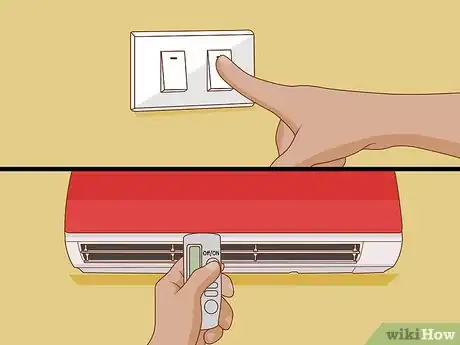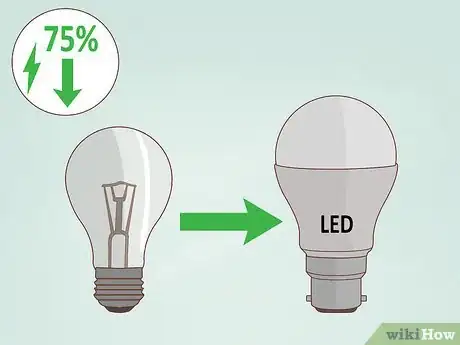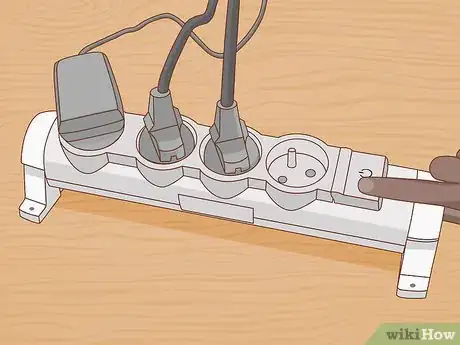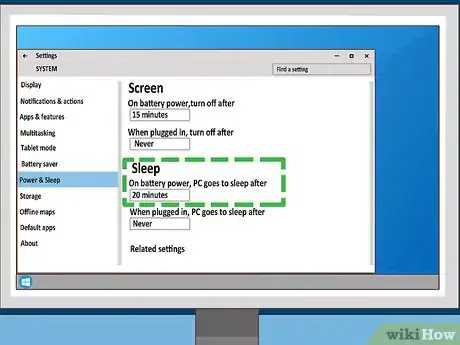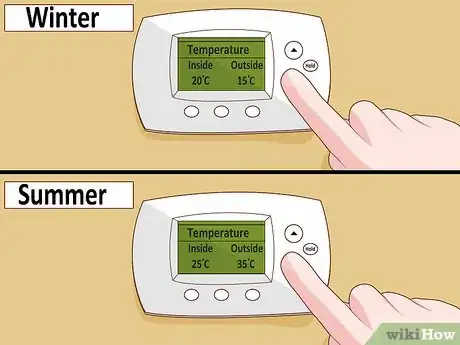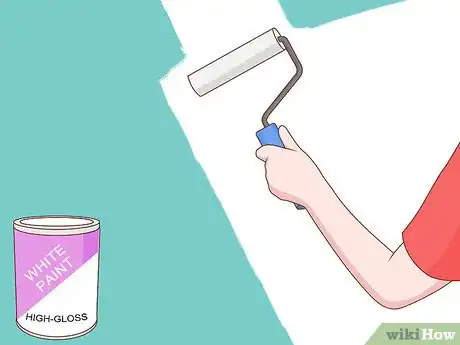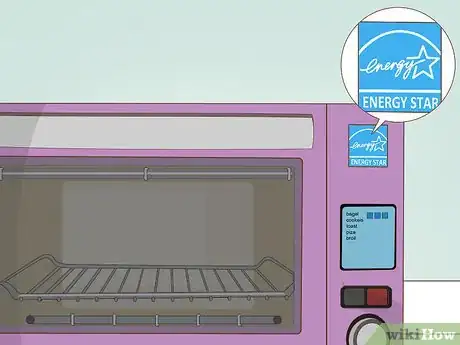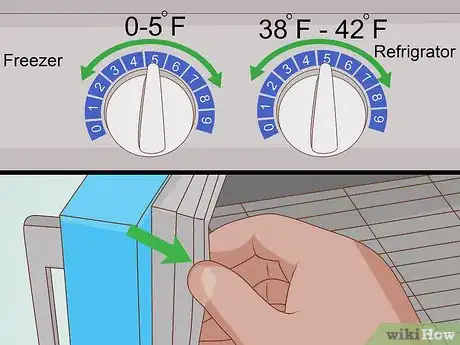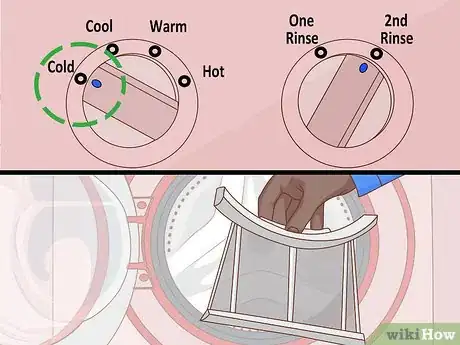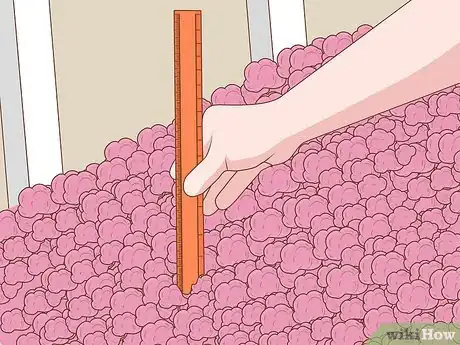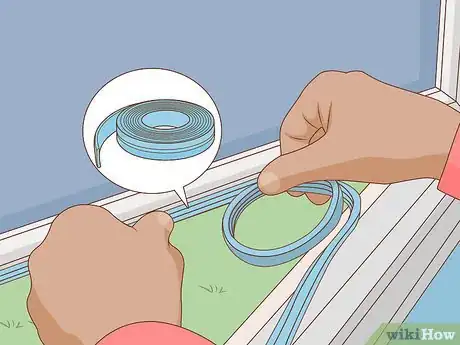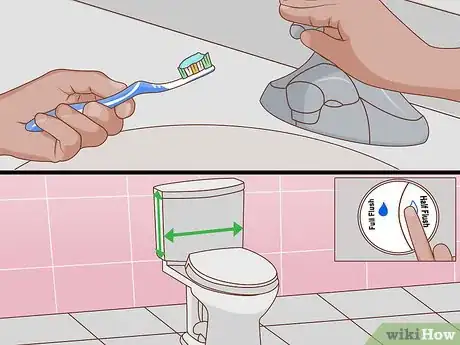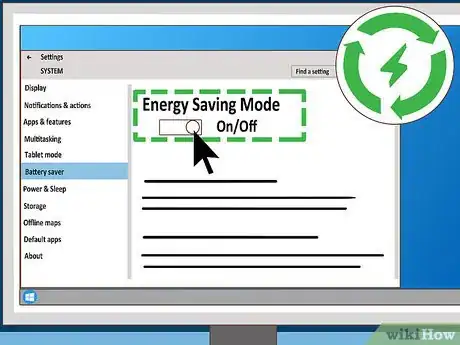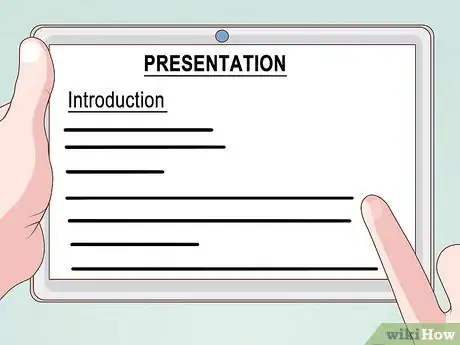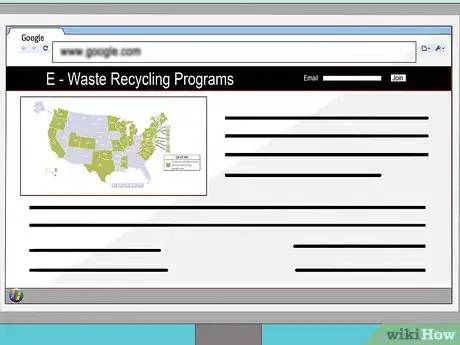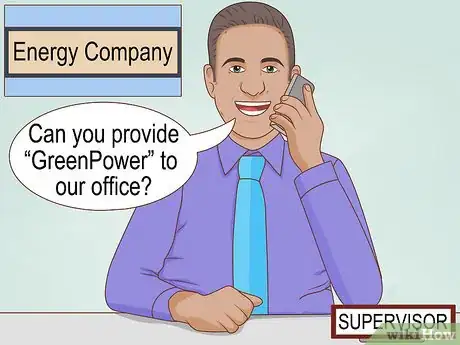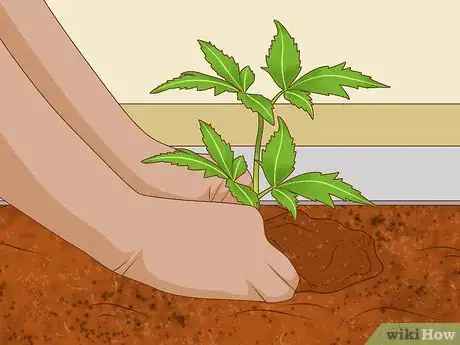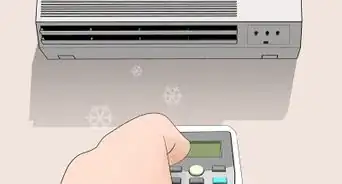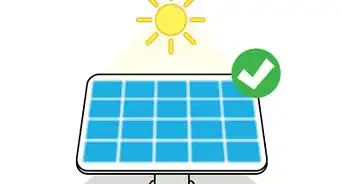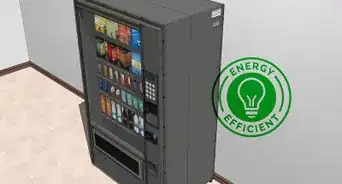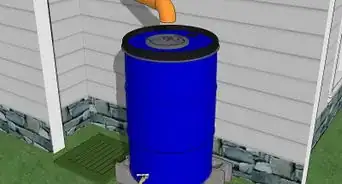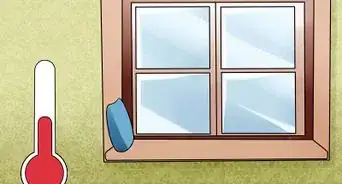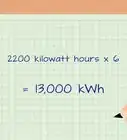This article was co-authored by Kathryn Kellogg and by wikiHow staff writer, Sophia Latorre. Kathryn Kellogg is the founder of goingzerowaste.com, a lifestyle website dedicated to breaking eco-friendly living down into a simple step-by-step process with lots of positivity and love. She's the author of 101 Ways to Go Zero Waste and spokesperson for plastic-free living for National Geographic.
There are 10 references cited in this article, which can be found at the bottom of the page.
wikiHow marks an article as reader-approved once it receives enough positive feedback. This article received 19 testimonials and 82% of readers who voted found it helpful, earning it our reader-approved status.
This article has been viewed 268,785 times.
Whether you’re looking to save money or simply decrease your carbon footprint, reducing your energy consumption is actually quite simple. With a few small adjustments, you can be a positive influence on the environment and help to reduce the amount of energy consumed by your community. By switching up your habits just a bit, you’ll be well on your way to a low-energy lifestyle!
Steps
Decreasing Your Energy Consumption in General
-
1Make a habit of turning off all lights and electronics when not in use. Institute a “switch off when done” policy for all computers, televisions, telephones, air conditioning units, lights, and other electronics when you’re not using them. This can help you save hundreds of dollars in energy bills and reduce your energy consumption.[1]
- Unplug any seldom used electronics or appliances, like a mini fridge in a meeting room that’s rarely used or an old coffee grinder in your kitchen.
- If you are going away on vacation, unplug your electronics and appliances. If your fridge is full, empty it or leave it on so that the food doesn't spoil.
-
2Switch your incandescent lightbulbs to LED bulbs. LED lightbulbs are affordable and easy to find at your local hardware store. These lightbulbs use up to 75% less energy than incandescent lightbulbs and come in a variety of shapes and light levels.[2]
- You can find these in just about any store that sells lightbulbs and lamps, including home improvement stores.
Advertisement -
3Use power strips for multiple gadgets. If you have lots of electronics or appliances that require an electrical outlet, plug them into a power strip. When these items are not in use, you can switch them all off at once to prevent “phantom” energy loss.[3]
- Power strips are a great choice if you have multiple appliances grouped together in the same area, such as a computer, printer, scanner, etc.
-
4Turn off your computer when it’s not in use. It is important that your computer is set to go to sleep or power down when not in use. If you plan to take a short break and go back to using your computer, allow it to hibernate rather than display a screen saver, which is a big energy waster.[4]
- This should also apply to all your other computer accessories, such as printers and scanners.
-
5Adjust your thermostat based on the temperature outside. It’s most efficient to keep the temperature in your house between 77 and 80 °F (25 and 27 °C) in the summer.[5] Lower your thermostat to between 64 and 68 °F (18 and 20 °C) in the winter.[6]
- Keep your windows covered during summer days to keep out the heat and allow natural light in during winter days to heat up the room.
-
6Recycle all recyclable materials. Recycling paper, plastic, glass, and other items can reduce your energy consumption significantly. Set up recycling bins in your home and office to encourage others to recycle rather than trash their items. Add recycling pickup to your trash service if you don’t already have it.[7]
- You can also recycle things like plastic bottles into craft projects, such as coin purses.
- The recycling rules will vary from city to city, so check with your city. Some places require you to sort items while others do not.
-
7Decorate your space in light colors. Choosing pale colors for your walls, ceilings, and floors will actually reflect more light into the space. Select a high-gloss paint for walls to reflect even more light! These steps will allow you to take advantage of natural daylight, as well as use lower-wattage lightbulbs when you need to turn the lights on.
- This also has an advantage in the summer, because the walls won't absorb as much heat.
Minimizing Your Energy Use at Home
-
1Use a smart thermostat. Smart thermostats can be controlled from an application on your mobile phone or tablet, allowing you to change the temperature when you’re away from the house. They also have multiple sensors that provide a better overall reading of the temperature in your home and heat or cool your home more efficiently than regular thermostats.[8]
- Smart thermostats also send you reports about your energy usage so you can be more in tune with how much energy you are using.
-
2Choose energy-efficient appliances. Look for the Energy Star label on appliances like refrigerators, freezers, ovens, dishwashers, desktop computers, laptops, printers, and scanners, which indicates that these appliances are energy efficient. Switching your electronics to those with an Energy Star label can significantly reduce your energy consumption and therefore your energy bills.[9]
- An Energy Star label signifies that an appliance is more energy-efficient than 75% of other appliances, therefore saving energy and money.[10]
- If you live outside the U.S., contact appliance manufacturers or local government officials to find out about similar ratings or programs in your area.
-
3Use your refrigerator and oven efficiently. Adjust your refrigerator temperature to 38 to 42 °F (3 to 6 °C) and your freezer temperature to 0 to 5 °F (−18 to −15 °C). Check that the seal on the oven door is intact and avoid peeking in the oven more than necessary, as this lets out heat and increases the cooking time.[11]
- If your fridge has a power-save switch, make sure it is on, and always check that the door seals tightly.
- Use your microwave, rather than your oven, for reheating small items.
-
4Use your washing machine and dryer efficiently. Set your washing machine to wash your clothes in cold water, which can save you up to 50 cents per load while still cleaning your clothes effectively. Always clean the lint out of the filter of the dryer after each use, and remember to dry heavy and light fabrics separately.
- Use the highest spin cycle on your washing machine, as the high spin speeds remove more moisture and reduce the time needed to dry clothing.
- If possible, invest in a front-loading washer as they save more water and energy than top-loading washers.
- Consider buying a high-efficiency washing machine. These are designed to save water and require less detergent.
-
5Ensure your home is well-insulated. Having a well-insulated home will reduce the amount of energy needed to heat or cool the area. Check the insulation around your home, especially in your attic. If needed, add more insulation to your roof/ceiling, attic, or basement to ensure your home is as energy-efficient as possible.[12]
- If your home is not well-insulated, it will trap more heat in the summer, and lose heat in the winter. This will require you to spend more energy on heating and air conditioning.
-
6Draught-proof your home. Having gaps or cracks in your walls or your windows can lead to drafts, which can let out cool air and lead to wasted energy use. Seal any gaps or cracks in your home so you can reduce your heating and cooling bill.
- Make sure your windows are draught-proof and energy efficient, especially if you live in a colder climate.
-
7Reduce your water usage. Saving water also reduces the amount of energy needed to purify or heat it. Limit your shower time and turn off the faucet when brushing your teeth. You can also make sure to wash only full loads of laundry and dishes in order to save water and energy used to heat the water. Installing low-flush toilets and low-volume faucets will also dramatically reduce your water usage.
- Avoid pre-washing your dishes before you put them in the dishwasher.
- Limit the amount of time sprinklers are on, and make sure to only water grassy areas, rather than overspraying onto sidewalks or parking lots.
Saving Energy at the Office
-
1Shut down all equipment at the end of the day. Turn off copiers, fax machines, computers, and other electrical equipment every night when you leave the office. Don’t forget to turn off the lights in bathrooms, meetings rooms, and offices. Gently remind your coworkers to do the same.[13]
- You should also do this when leaving for the weekend or vacation.
- Say something like: "These computers use a lot of energy when we aren't using them. Let's try turning them off for the night to save energy and electricity bills."
-
2Buy or lease computer monitors with energy-saving features. Many newer computers will have built-in energy-saving features that can reduce the amount of electricity used by your office. If you’ve been using the same desktop for many years, consider upgrading to a new version that has energy-saving features.
- When not in use, allow your computer to power down or hibernate rather than display a screen saver.
-
3Reduce paper waste by printing only what is necessary. Avoid printing out emails, memos, and other information unless absolutely necessary. You’ll reduce energy consumption by using the printer less, which will, in turn, extend its life. If you do need to print something, use both sides of the paper.[14]
- For example, send memos around the office by email or use a tablet for your presentation notes.
- Save any memos that you print out and post in the break room. Use the blank side to print the next memo on. This way, you can use the same sheet of paper twice!
-
4Recycle old electronic equipment. Rather than tossing out old phones, computers, and copiers, recycle these items instead. This saves energy because materials for new electronics can be repurposed and recycled from old ones, rather than made from scratch.[15]
- You may have to perform an Internet search to find e-waste recycling programs in your area.
-
5Ask your supervisor about switching to GreenPower. GreenPower is a program offered by some energy providers to reduce your home or office’s carbon footprint in Australia, the United States, and Canada. GreenPower providers are part of a government accredited program to use clean, renewable electricity in homes and offices and to reduce greenhouse gas emissions.[16]
- Your supervisor can contact your office’s energy company and ask them if they can provide GreenPower to the office to reduce the office’s energy consumption on a daily basis.
-
6Organize a carpool, ride your bike, or take public transit to the office. You can cut down on your energy use by adjusting your daily commute. Carpooling with coworkers will keep one more car off the road and reduce the amount of energy you use via fuel. Public transit is also a great way to limit your energy consumption, and many city buses run on eco-friendly fuel.[17]
- Walking or biking to work every day is a great opportunity to get in some exercise.
- Bring a change of clothes, or even toiletries if you can shower at the office, in case you get sweaty or dirty on the commute.
-
7Plant trees as holiday gifts. Rather than giving traditional gifts to your clients, plant a tree in their name instead. Planting trees reduces energy consumption by eliminating the need for materials that would be used for traditional gifts and wrapping paper, and is also great for the environment.[18]
- If you plant them near the building, the shade provided can even reduce the amount of air conditioning needed to cool the office in the warmer months!
Expert Q&A
Did you know you can get expert answers for this article?
Unlock expert answers by supporting wikiHow
-
QuestionHow do we use renewable energy at home?
 Kathryn KelloggKathryn Kellogg is the founder of goingzerowaste.com, a lifestyle website dedicated to breaking eco-friendly living down into a simple step-by-step process with lots of positivity and love. She's the author of 101 Ways to Go Zero Waste and spokesperson for plastic-free living for National Geographic.
Kathryn KelloggKathryn Kellogg is the founder of goingzerowaste.com, a lifestyle website dedicated to breaking eco-friendly living down into a simple step-by-step process with lots of positivity and love. She's the author of 101 Ways to Go Zero Waste and spokesperson for plastic-free living for National Geographic.
Sustainability Specialist Check whether there are any renewable energy suppliers in your area. These companies work with your existing utility companies to make sure all the energy you use is supplied by clean energy sources. It doesn't cost anything extra for you, and in fact, you typically see your electricity bills go down.
Check whether there are any renewable energy suppliers in your area. These companies work with your existing utility companies to make sure all the energy you use is supplied by clean energy sources. It doesn't cost anything extra for you, and in fact, you typically see your electricity bills go down. -
QuestionHow can I reduce the energy consumption in my home?
 Kathryn KelloggKathryn Kellogg is the founder of goingzerowaste.com, a lifestyle website dedicated to breaking eco-friendly living down into a simple step-by-step process with lots of positivity and love. She's the author of 101 Ways to Go Zero Waste and spokesperson for plastic-free living for National Geographic.
Kathryn KelloggKathryn Kellogg is the founder of goingzerowaste.com, a lifestyle website dedicated to breaking eco-friendly living down into a simple step-by-step process with lots of positivity and love. She's the author of 101 Ways to Go Zero Waste and spokesperson for plastic-free living for National Geographic.
Sustainability Specialist The basic things are, switch your light bulbs to LED light bulbs, make sure that your windows don't let air seeping out. Make sure that your doorways are blocked, you know, they make those draft blockers in case your door stands really tall and lets a whole bunch of cold or hot air in. If you want to get into technical things that are really going to make a difference, installing solar in your home will be huge. But just because you can't get solar panels installed in your apartment, it doesn't mean you can't switch to renewable energy. There are several different types of energy providers. Companies like Arcadia Power and Clean Choice Energy work with your existing utility companies to make sure all the energy you use is supplied by clean energy sources.
The basic things are, switch your light bulbs to LED light bulbs, make sure that your windows don't let air seeping out. Make sure that your doorways are blocked, you know, they make those draft blockers in case your door stands really tall and lets a whole bunch of cold or hot air in. If you want to get into technical things that are really going to make a difference, installing solar in your home will be huge. But just because you can't get solar panels installed in your apartment, it doesn't mean you can't switch to renewable energy. There are several different types of energy providers. Companies like Arcadia Power and Clean Choice Energy work with your existing utility companies to make sure all the energy you use is supplied by clean energy sources. -
QuestionHow can I reduce energy consumption?
 Community AnswerTry using one fan or light at at a time, then shutting it off before using another, and follow the other tips in this article.
Community AnswerTry using one fan or light at at a time, then shutting it off before using another, and follow the other tips in this article.
References
- ↑ http://www.nrdc.org/air/energy/genergy.asp
- ↑ https://green.harvard.edu/tools-resources/poster/top-5-steps-reduce-your-energy-consumption
- ↑ https://green.harvard.edu/tools-resources/poster/top-5-steps-reduce-your-energy-consumption
- ↑ https://green.harvard.edu/tools-resources/poster/top-5-steps-reduce-your-energy-consumption
- ↑ https://www.directenergy.com/learning-center/energy-efficiency/recommended-thermostat-settings-winter
- ↑ https://energy.gov/energysaver/thermostats
- ↑ https://www.sciencealert.com/working-green-50-tips-to-reduce-your-offices-waste
- ↑ https://www.uswitch.com/gas-electricity/guides/what-are-smart-thermostats/
- ↑ http://www.nrdc.org/air/energy/genergy.asp
- ↑ https://www.energystar.gov/buildings/facility-owners-and-managers/existing-buildings/use-portfolio-manager/interpret-your-results/what
- ↑ http://www.nrdc.org/air/energy/genergy.asp
- ↑ https://www.choice.com.au/home-improvement/energy-saving/reducing-your-carbon-footprint/articles/five-ways-to-reduce-your-households-energy-use
- ↑ http://www.nrdc.org/air/energy/genergy.asp
- ↑ http://www.conserve-energy-future.com/20-energy-saving-tips-reduce-business-energy-costs.php
- ↑ https://www.sciencealert.com/working-green-50-tips-to-reduce-your-offices-waste
- ↑ http://www.wwf.org.au/get_involved/change_the_way_you_live/reducing_energy/
- ↑ https://www.sciencealert.com/working-green-50-tips-to-reduce-your-offices-waste
- ↑ https://www.sciencealert.com/working-green-50-tips-to-reduce-your-offices-waste
About This Article
To reduce your energy consumption, turn off all lights and electronics when you're not using them. You can also reduce energy consumption by 75% by replacing incandescent lightbulbs with LED bulbs. If you're buying new appliances, look for the Energy Star label to significantly decrease your energy usage. Finally, to save both energy and water, limit your shower time, turn off the faucet when brushing your teeth, and only wash full loads of laundry. For tips on how to save energy at the office, keep reading!
